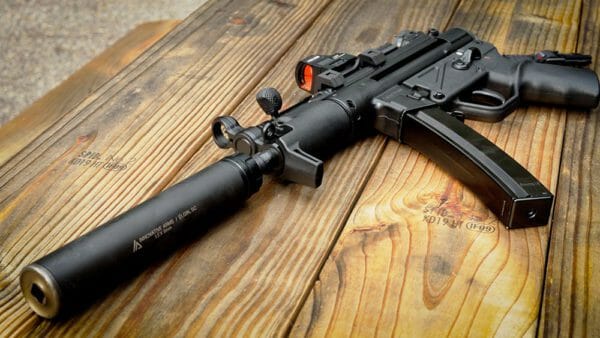
A three-judge panel for the Fifth Circuit Court of Appeals ruled that the Second Amendment does not protect suppressors.
The case is United States v. Peterson. George Peterson was the owner of PDW Solutions, LLC. PDW Solutions was a Louisiana Federal Firearms Licensed (FFL) gun shop. The Bureau of Alcohol, Tobacco, Firearms and Explosives (ATF) claims that he was selling firearms without running background checks. The Bureau also states he did business away from the location of the FFL and allowed for a straw purchase. Because of Peterson’s alleged misconduct, the ATF asked for a received a search warrant for Peterson’s home. During that search, ATF Special Agents found a homemade, unregistered silencer in his bedroom closet.
The ATF charged Peterson with a felony for violating the National Firearms Act of 1934 (NFA). Peterson asked the judge to dismiss the case at the District Court level because the NFA burdened his Second Amendment-protected rights. He also asked the court to suppress the evidence because he claimed that the search of his home violated his Fourth Amendment-protected rights.
The District Court judge denied his request to dismiss the case and suppress the evidence. Mr. Peterson would reach a deal with the court to plead guilty while reserving his right to appeal to the Fifth Circuit Court of Appeals. The Louisiana man was sentenced to 24 months in prison but immediately appealed to the higher court.
A panel of three judges took up the case and heard arguments. Mr. Peterson claimed that the NFA was unconstitutional, and suppressors were protected arms. Lawyers for the ATF claimed that suppressors were not arms at all. They said they were accessories that were afforded no Second Amendment protections.
The three-judge panel would side with the ATF. Although the courts consider magazines as protected arms under the Second Amendment, they said suppressors were not protected because a firearm could function without them. The judges said that the defense’s arguments failed the Bruen two-step test.
The first step of a Bruen test is the plain text of the Second Amendment. If Mr. Peterson had been found to be part of “the people” and a suppressor had been found to be a protected arm, his conduct would have been presumptively constitutional. If he were successful in step one, the government would have to provide analogues from the founding era showing that the NFA is consistent with the nation’s tradition and history of firearms regulations. This requirement would have been a high bar for the government to meet.
The judges would rule that Peterson failed step one since they believed suppressors were accessories, not protected arms. They claimed that the suppressor alone could not be used as a defensive tool without a gun. The judges acknowledged that it could be thrown but said it was akin to throwing a baseball or shoe. Since the judges believed that Peterson failed step one, it was unnecessary to proceed to step two.
The judges wrote: “Peterson posits that suppressors are ‘an integral part of a firearm’ and therefore warrant Second Amendment protection: ‘Inasmuch as a bullet must pass through an attached [suppressor] to arrive at its intended target,’ suppressors are used for casting and striking and thus fit Heller’s definition. But that is wrong. A suppressor, by itself, is not a weapon. Without being attached to a firearm, it would not be of much use for self-defense. And unless a suppressor itself is thrown (which, of course, is not how firearms work), it cannot do any casting or striking. (noting that a suppressor ‘could be thrown at someone like a shoe or a baseball, which, most would agree, are not arms protected by the Second Amendment’). While a suppressor might prove useful to one casting or striking at another, that usefulness does not transform a gas dissipater into a bullet caster. Instead, we agree with the Tenth Circuit that a suppressor ‘is a firearm accessory . . . not a weapon.’ And while possession of firearms themselves is covered by the plain text of the Second Amendment, possession of firearm accessories is not.”
Mr. Peterson can request an en banc hearing where the full Fifth Circuit would hear the case, or he can appeal directly to the Supreme Court.
About John Crump
Mr. Crump is an NRA instructor and a constitutional activist. John has written about firearms, interviewed people from all walks of life, and on the Constitution. John lives in Northern Virginia with his wife and sons, follow him on X at @crumpyss, or at www.crumpy.com.

from https://ift.tt/BPFK3Qd
via IFTTT

No comments:
Post a Comment